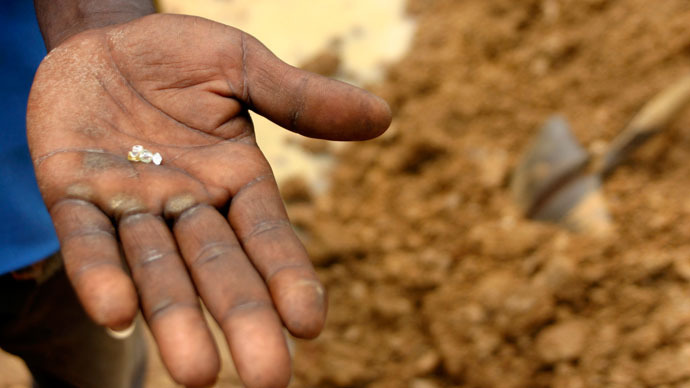Almost one half of world s diamonds come from central and southern africa

Almost one-half of world’s diamonds come from central and southern Africa.
Diamonds—rare, dazzling gemstones that hold immense value and captivate hearts worldwide. Astonishingly, almost half of the world’s supply of these precious stones are sourced from central and southern Africa1^. Let’s dive deeper into the significant role this region plays in the global diamond industry and explore the factors that contribute to its dominance.
Central and southern Africa, encompassing countries such as Botswana, South Africa, Angola, and the Democratic Republic of Congo, feature some of the richest diamond deposits on the planet. These countries boast abundant natural resources, particularly the diamond mines that have been the focus of extensive mining activities for decades.

Among the African countries known for diamond production, Botswana stands out as a leading player in the diamond industry. It has emerged as the world’s largest diamond producer by value, playing a pivotal role in shaping the global diamond market. The country’s mines, such as Jwaneng and Orapa, have gained international recognition for their consistent yield of high-quality diamonds.
South Africa, with its rich and tumultuous history in diamond mining, also contributes significantly to the global diamond supply. The famous Kimberley Mine, discovered in the 19th century, played a paramount role in establishing South Africa as a major player in the diamond industry. Although its production has declined over the years as deposits have depleted, South Africa still plays a vital role in the global diamond market.

Apart from Botswana and South Africa, Angola and the Democratic Republic of Congo are also notable contributors to the global diamond supply. These countries possess considerable diamond reserves and have seen an increase in diamond production in recent years. However, it’s important to note that political instability and conflicts have, at times, hindered the optimal exploitation of their diamond resources.
The dominance of central and southern Africa in the diamond industry can be attributed to the continent’s geological makeup. Millions of years ago, volcanic activity, seismic upheavals, and erosion processes helped concentrate diamonds in specific areas. The abundance of kimberlite pipes, which are diamond-rich volcanic rock formations, has made central and southern Africa a hotbed for diamond mining.
Moreover, countries in this region have made significant efforts to ensure sustainable and responsible diamond mining practices. Initiatives such as the Kimberley Process Certification Scheme, an international framework to prevent the trade of conflict diamonds, have been adopted to maintain ethical standards in the industry. These efforts have contributed to the reputation of central and southern African diamonds as ethically sourced and harnessed with environmental consciousness.
In conclusion, central and southern Africa plays a crucial role in the global diamond industry, providing nearly half of the world’s diamonds. The region’s abundant diamond reserves and commitment to sustainable mining practices have solidified its position as a major player in the industry. As we continue to marvel at the brilliance of diamonds, let us not forget the journey they undertake from the heart of Africa to captivate the world with their beauty.
Tags
Share
Related Posts
Quick Links
Legal Stuff

